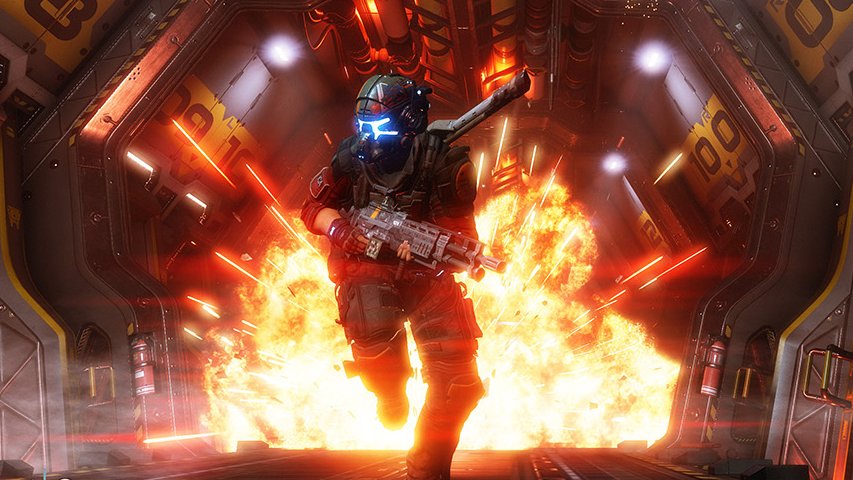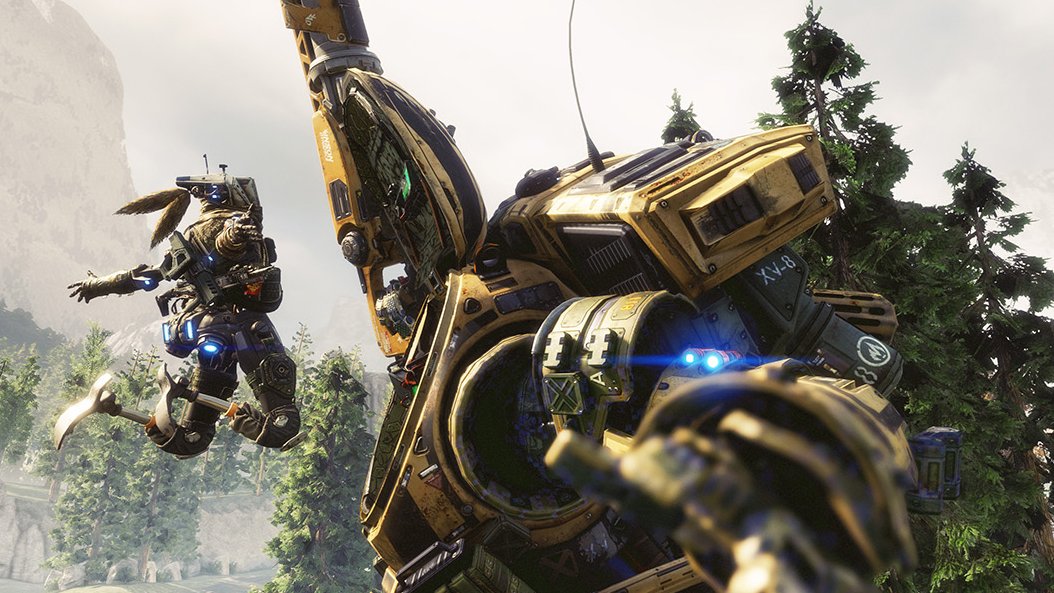Titanfall 2 singleplayer features platforming, puzzles and a big friendly bot
The unusual game jam-like process behind the mech shooter’s new campaign.

The first thing I thought when they announced a campaign for Titanfall 2 was that this marked the return of the modern FPS campaign’s pioneers. All those single-player modes I got bored of by 2010’s Medal of Honor and Black Ops 2 stemmed from the linear, set piece-heavy excitement we first saw used so effectively in Call of Duty 4. No-one ever did the same thing quite as good again. So what happens when the same team comes back to making a campaign almost a decade later? They do a completely different thing.
They didn’t want to just lift the multiplayer mode over and drop them into a single-player shooter—something more ‘bespoke’ is what they went for instead. The process of making Titanfall 2’s campaign sounds almost like a game jam to me, where 20 developers on the game’s design team would take the theme of building a weapon, level or feature for a single-player component with just one rule—it had to feel like Titanfall. That’s why you can still double jump in Titanfall 2, and why there are obviously big robots knocking around. There are quieter moments in between large-scale action that are a little more unexpected: platforming, puzzles and exploration. In Titanfall? The previously online-only mech shooter? Sure, why not.
The next step saw the developers piecing those components, which they call ‘action blocks’, together, resulting in what the developers describe as a campaign that “As far as the design team went,” explains art director Joel Emslie during an interview at Gamescom. “They eventually settled on the idea of creating these little compartmentalised action blocks, where they would do a different experiments. One of the ones you actually see in that singleplayer [demo], was an action block where you're moving panels on cranes, to solve a puzzle with wallrunning and double-jumping and things like that. There were over 100 of those, and what you see now, and what you'll end up seeing in Titanfall's singleplayer is the composition of those different action blocks, strung together in a really meaningful way that propels the story forwards.”
Indeed, in the demo they show off a section where the player has to line up a series of platforms in the distance that your titan can then throw you towards, so you can wallrun to the next part of the world. In another moment, your character carries something called an arc tool, which you can use to disable these presumably deadly giant fans in order to progress through them. It seems at odds with Titanfall the multiplayer game is, but maybe that’s okay. Variety is what they’re going for, with Emslie citing Valve’s work on Portal and Half-Life as influences in terms of how those games make the most of every tool available to the player, as well as the environment itself. “Each level has an absolute and completely different theme as far as gameplay goes, which is actually surprising to us in the end. You definitely feel like you're never playing the same game.”
There are moments where I see the player character platforming around vertical environments, too, which again makes me double take slightly—it’s odd seeing stuff like this in an offshoot of such a relentless, fast-paced arena shooter. The process of making this campaign has been unusual relative to how Respawn has traditionally done it—they were starting with a multiplayer mode and working backwards, after all.

“I worked on those games and I think Call of Duty 4 was a blast, it was really new and fresh at the time,” says Emslie. “It was a great time for that type of game to come out. Much of the crew was together on that. Going into the sequel to that was...I was even scratching my head and [going], 'I wonder if there's something better to all this stuff?' But even then at that time, it was like, 'this is working really well, and it's refined'. Having the opportunity to start a brand new company and start something from scratch—that's what came out of Titanfall 1. Even going in, we were like, 'let's make a multiplayer game. Let's try something totally different—let's try to put campaign in there, let's try to do a narrative. Didn't pan out so great. Well now, let's try and reverse engineer multiplayer mechanics and put them in a singleplayer’.
“Which is actually the opposite way you normally do that,” Emslie says. This is the team that created the template of scripted first-person shooter campaigns—with seven years passing since Modern Warfare 2, there’s a hunger to try something new, and no fear in exploring new ways of finding out what that is. “I think Titanfall 2 is the result of some trial and error, some reverse engineering and doing things completely different even from the development standpoint. And then what you get is this really exotic, crazy game that is unexpected for ultimately the community, but also us developing it."
The biggest gaming news, reviews and hardware deals
Keep up to date with the most important stories and the best deals, as picked by the PC Gamer team.


